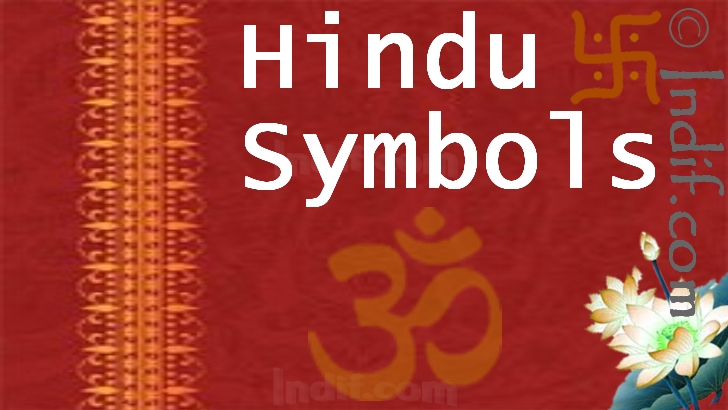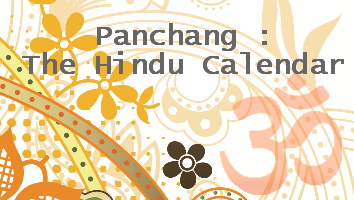![]()
Source : Complied from various published articles on Hindu Symbols
As Hinduism is the oldest surviving religion of the world, it has more numbers of symbols than other religions. No religion is so filled with symbols as Hinduism. All Hindus are touched by symbol's all through the life in some way or the other. Each symbol has a different meaning and is used for different purpose. Some of the common religious Hindu symbols with their meaning and use in Hinduism are -
Lotus:

The flower of lotus (Hindi : "Kamal" (कमल); Sanskrit : "Padma" (पद्मा)) is of great importance in Hinduism. The flower of lotus represents culture and politeness. The lotus is associated with several Hindu deities.Hindu gods and goddesses are typically depicted with lotuses. They sit on lotus flower, they hold lotus, sometimes they emerge from lotus. Krishna is described as the "Lotus-Eyed One," referring to his divine beauty. Brahma and Lakshmi, are often seen with the lotus symbol. Other deities associated with the lotus include Vishnu and Saraswati.
Om or Aum:

In Hinduism, Om is the most sacred of all sounds. It is made up of three Sanskrit letters, aa, au and ma. The most important symbol in Hinduism, it occurs in every prayer and invocation to most deities begins with it and is frequently used in Buddhist and Jain rituals as well. OM represents Brahman, the Almighty. It is said that Om was the sound heard during the time of the creation of the universe. As the Cross is to Christans, Om is to Hindus. Om is often found worn as pendants,rings, enshrined in every Hindu temple, and printed on T-shirts.
Swastika:

Swastika is the second most important Hindu symbol. The term 'Swastika' is believed to be a fusion of the two Sanskrit words 'Su' (good) and 'Asati' (to exist), which when combined means 'May Good Prevail'. Swastika is an ancient Hindu symbol that denotes well-being and auspiciousness. It means "Everything is Good." The auspicious symbol of the swastika is very commonly used in Hindu art, architecture and decoration. It can be seen on temples, houses, doorways, clothing, and cars etc. It is usually a major part of the decoration for festivals and special ceremonies like weddings.
Tilak:

The tilak (तिलक) is also known as tika or tilaka. Tilak is a vertical line made with Kumkum (Red lead) between the eyebrows on the forehead. It can be worn daily or only on religious occasion in some customs. Tilak marks are applied by hand or with a metal stamp. Tilak is usually made from red lead but can be made form a range of material such as ash from a sacrificial fire, sandalwood paste, turmeric, cow dung, clay, or charcoal.
The man wears the tilak in different lines depending on the custom of is religious affiliation. Saivites (followers of Shiva) wear a tilak of three horizontal lines across the forehead, with or without a red dot. Among Vaishnavites (followers of Vishnu), the many tilak variations usually include two or more vertical lines resembling the letter U, which symbolizes the foot of Vishnu.
Apart from the spiritual symbolism, the tilak has a cooling effect and a reat medicinal significance. Wearing a tilak dives a cooling effect on the forehead, which can assist in concentration and meditation. While, applying sandalwood paste has great medicinal value.
Trishul:

Trishul (Hindi: त्रिशूल, English: Trident), the tri headed spear is one of the most popular symbols associated with Lord Shiva and Goddess Durga. The Trishul symbolizes the balance of the three forces of preservation, creation and destruction. It also represents the three aspects of consciousness - cognition, conation and affection.


 Collection of Hindu Vrat and Upavas Kathas
Collection of Hindu Vrat and Upavas Kathas






